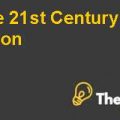
- Analyze the challenges Starbucks faced in entering the Indian Market
Challenges faced by Starbucks in entering the Indian market can be analyzed by using PEST analysis and Porter’s five forces model on the external environment.
PEST ANALYSIS
Political Factors
As far as the political and government aspect are concerned, the Indian economy has been experiencing more stability. There internal turmoil resulting from political influences has been reduced and this has improved working environment for industries and organizations in India. Young Indians are becoming world-class consumers, and corporations are considering this fact. This change can be attached to many factors. One factor is that the Indian economy has experienced an enormous liberalization. Further, reform measures by the current government such as approval to FDI in multi brand retail for up to 51% will certainly add value to these factors.
Economic Factors
The factors like poor infrastructure, regulatory and foreign investment controls, bureaucracy, the reservation of key products for small-scale industries, and high monetary setbacks were limiting the financial development of India. However, in 1991 liberalization measures were taken which opened the economy to foreign investments and trade; it dropped tax rates, lowered customs duties, and dismantled important controls. In addition, it virtually abolished licensing controls on private investment, and broke public sector monopolies. The country has recently become a key exporter of software workers and software services, and the information technology sector is leading a strong growth pattern. With a world transforming from an industrial economy to an informational economy, India is sure to play a fantastic role in the future of the global industry.
Socio-Cultural Factors
By an increase in job opportunities in India, money stays in the hands of the Indian consumers empowering them to reinvest in the Indian economy. Now days, young Indians have switched to spending excessively as they are encouraged by job opportunities available to them. The mind-set of the young generation is to appreciate as well as enjoy life and spend money.
However, India has a tea-based culture. Majority of the Indians take tea twice a day that means once in the morning and once in the evening. As per statistical surveying studies, 71% coffee was mainly consumed in the urban areas and 29% in the rural areas. Individuals in southern states of India generally consumed coffee. The people in the northern states were generally not coffee drinkers, but drank coffee and tried different things with different flavors as a fashion statement. The utilization of instant coffee and filter coffee was almost equivalent on the national level.
Technological Factors
IT industry has boosted a lot in India; therefore, India has an ample service in the field of technology. This will also benefit in the technological requirements faced by Starbucks. Starbucks can also use technology to gain more customers because Indians, particularly the wealthy and youthful class will be pleased to have fast and efficient Wi-Fi services at the café. In addition to this, people here love to be related with their conventional and rich heritage as well as its blending with advancement and this may be reflected in the stores' ambience. People will become loyal to coffee if they get an understanding about how varieties of coffee are brewed, sourced, roasted etc.
PORTER’S FIVE FORCES
Five forces model is one of the widely held evaluation tools of an industry’s competitive forces. These five forces include: competitive force of rivalry, threat of new entrants, threat of substitute product, bargaining power of supplier and bargaining power of buyer.
Industry Competition and Rivalry: High
Major rivalry for Starbucks in India originates from Cafe Coffee Day (CCD). The abbreviation CCD is known to be the vast majority of the individuals in urban parts of India. Their positioning is same as that of Starbucks in US. Other competitors include: Quicky's, Barista Lavazza, Costa Coffee and Barista, which are also the multinational brands, and widely perceived. Secondary competitors also exist in the market including Georgia Coffee, served in fast food restaurants like Mc Donald’s and KFC, etc.
Threat of New Entrants: Low
In India the entry barriers in the coffee retail industry are relatively low, especially for the foreign players due to the fact that 51% FDI is permitted in India in retail industry. Any company can enter into the retail sector of India by getting an intensive understanding of the market. Coffee is not the product where there are options for product differentiation. The existing players have been here in the market from last 10 years so it is going to be tough to establish a brand name for any of the new entrant in the Indian market.
Threat of Substitute Products: Medium
India has overwhelmingly tea-based culture and awareness about coffee needs to be made as much as possible; however, tea-based beverages should be incorporated in Starbucks’ offerings. Besides tea, other product substitutes will incorporate different beverages, for example, fruit juices, soda, beer and other carbonated .........................
This is just a sample partial case solution. Please place the order on the website to order your own originally done case solution.












